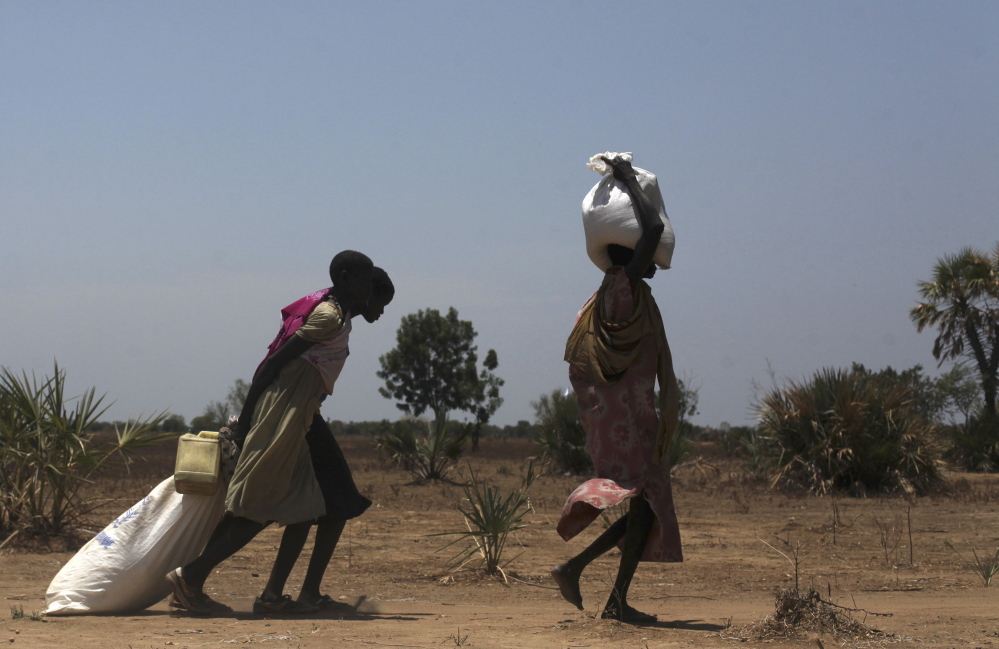NYAL, South Sudan — Desperate South Sudan villagers, fleeing fighting across the country, are eating grass and roots to survive as the World Food Program starts costly air drops of food to northern parts of the country.
But the air drops, three times more expensive than road deliveries, are straining the ramped-up humanitarian response because only a third of the U.N.’s requested $1.27 billion has been raised for the crisis.
The WFP’s top official, executive director Ertharin Cousin, visited Nyal in Unity state on Tuesday before heading on Wednesday to the Ethiopian border town of Gambela, a town overwhelmed by nearly 70,000 South Sudanese fleeing the fighting, which started in December.
A massive Ilyushin plane has started dropping more than 30 tons of food in the northern states. Each drop provides at least 15 days of rations for 18,000 people, intended to help those stranded between pro-government and anti-government troops.
Because of oncoming rains, “in a few weeks this area will be totally inaccessible by road, so in order to continue to feed these people we need to already have the food in here and by air is the only means,” Cousin said.
Nearly 7 million people are at risk of hunger, according to the Food and Agriculture Organization.
The U.N. reports that in the 100 days since the South Sudan conflict started more than 1 million people have fled their homes and 3.7 million are now at high risk of food insecurity.
The international community has a moral responsibility to help, said U.N. High Commissioner for Refugees António Guterres, who also travelled with Cousin to Nyal.
“One family told me they were boiling poisonous roots for six or seven days to take out the poison in order to have something to eat,” he said. “These people are in risk of starvation.”
Send questions/comments to the editors.



Success. Please wait for the page to reload. If the page does not reload within 5 seconds, please refresh the page.
Enter your email and password to access comments.
Hi, to comment on stories you must . This profile is in addition to your subscription and website login.
Already have a commenting profile? .
Invalid username/password.
Please check your email to confirm and complete your registration.
Only subscribers are eligible to post comments. Please subscribe or login first for digital access. Here’s why.
Use the form below to reset your password. When you've submitted your account email, we will send an email with a reset code.